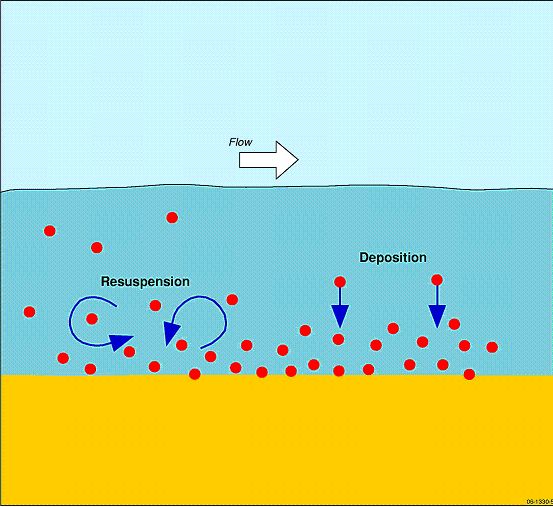Resuspension
Resuspension of bed sediments is the process by which currents and turbulence dislodge settled particles and mix them back into the water column. Fine sediments in the bed tend to stick together due to electrostatic forces. This cohesiveness is a property of the sediment mineralogy and also whether the sediment surface is covered by biogenic films or not. Such cohesive sediments may not resuspend until a critical flow speed is exceeded, which may be much higher than for coarser particles. In typical model formulations of the resuspension process, resuspension rates scale as the square of the flow speed so that doubling of flow speeds would quadruple resuspension rates.

Figure 1. Conceptual illustration of the resuspension process (modified after illustration in [1])
- Webster, I.T., Ford, P.W., Robson, B., Margvelashvili, N., and Parslow, J.S. 2003. Conceptual Models of the Hydrodynamics, Fine-Sediment Dynamics, Biogeochemistry, and Primary Production in the Fitzroy Estuary. Cooperative Research Centre for Coastal Zone, Estuary & Waterway Management Technical Report #8.
Contributor
Ian Webster, CSIRO Land & Water
« Back to Glossary Index

